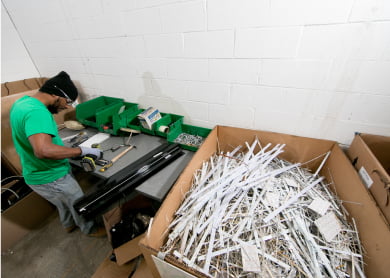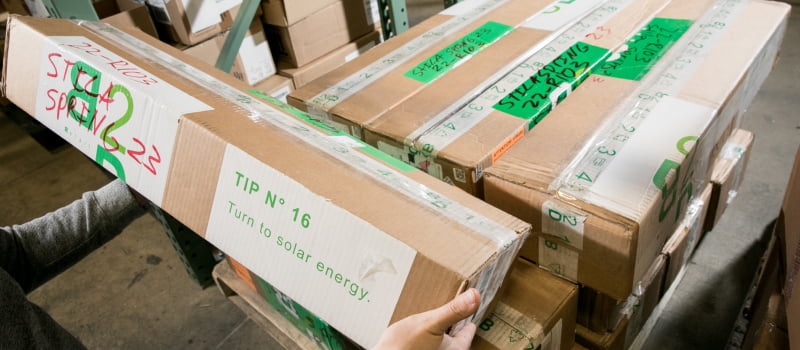

October 19, 2023
Transforming Retail Displays for a Sustainable Future through Eco-Design
According to a survey from McKinsey & Co., 66% of all respondents and 75% of millennial respondents say they consider sustainability when purchasing. In today’s dynamic business landscape, sustainability has emerged as a fundamental driver of brand success.
How does sustainability play a part in displays? Displays may be the last component on a consumer’s mind when thinking about sustainability, but they contribute significantly to waste that ends up in incineration or landfills.
To avoid this, integrating eco-design principles is more than merely an option; it has become imperative. This article dives into the significance of embracing eco-design when designing retail displays, focusing on the technical aspects of material selection and sustainable design practices. By doing so, luxury brands can curate captivating displays that attract customers while making substantial contributions to a sustainable future.
The Power of Eco-Design
Eco-design represents a holistic approach that encompasses the entire lifecycle of retail displays, from selecting materials and manufacturing processes to considering their end-of-life fate. By making eco-design a central tenet of their approach, luxury brands can achieve a trifecta of benefits: a reduced environmental footprint, resource preservation, and minimized waste generation. Furthermore, eco-designed displays resonate deeply with environmentally conscious consumers, enhancing brand reputation and fostering customer loyalty.


Material Selection and Sustainability
Material selection is the cornerstone of eco-design, requiring meticulous attention to detail during the conception and design of retail displays. Opting for sustainable and renewable materials, such as recycled acrylics or responsibly sourced wood, is pivotal in mitigating the environmental impact. Luxury brands can assure alignment with their sustainability objectives by meticulously assessing the lifecycle of materials, encompassing everything from extraction to eventual disposal.
Energy Efficiency and Resource Conservation
Eco-designed retail displays go beyond material choices; they extend their commitment to sustainability throughout their lifecycle. Incorporating energy-efficient lighting solutions, mainly through LED technology, serves a dual purpose of reducing energy consumption while effectively showcasing products and integrating intelligent technologies, such as motion sensors to activate displays, bolsters energy efficiency by curtailing unnecessary electricity usage.

Minimizing Waste and Promoting Recycling
Eco-design serves as a safeguard against wasteful practices often associated with retail displays. Displays that lack recyclability and the ability to be repurposed contribute significantly to landfill waste, exacerbating environmental concerns. By adopting eco-design practices, luxury brands ensure that their displays are conceived with end-of-life considerations, fostering a circular economy while minimizing waste disposal.
The Negative Ramifications of Neglecting Eco-Design
Failure to prioritize eco-design principles in retail displays carries profound environmental repercussions. Displays crafted from non-recyclable or non-biodegradable materials exacerbate pollution and waste accumulation. Such practices jeopardize a brand’s image, leading to consumer backlash and erosion of trust. Moreover, evolving consumer preferences and regulatory pressures underscore the indispensable nature of eco-design for the enduring sustainability of businesses.
B2D’s Strategic Process of Working with Brands
Eco-design has ceased to be a luxury; it has become an imperative for luxury brands navigating a rapidly evolving world. By infusing eco-design principles into creating retail displays, brands can craft visually arresting showcases that leave a minimal environmental footprint while resonating deeply with eco-conscious consumers. Neglecting these considerations harms the environment and poses substantial risks to brand reputation. Embracing eco-design represents an opportunity for luxury brands to lead toward a more sustainable future, where retail displays are visually captivating and aligned with responsible and conscientious consumption.